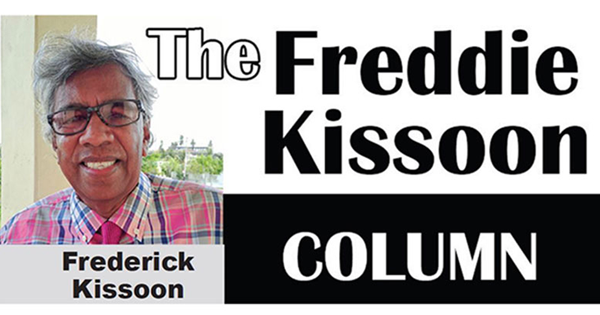By Freddie Kissoon
I STOPPED by Sankar’s Autoworks to pick up a few things for my car that the mechanic wanted. In front of the store was a table with sales items. Naturally, I looked to see what bargains they had. On the table was a magazine. Obviously, in my line of work, you have to read everything, so I asked the attendant if the magazine was on sale.
He said no and that I could take it. It was “Fastlane”, the title of the magazine produced by the Guyana Motor Racing Club. I went home, glanced at the magazine then put it down on my study table. As I walked away, something told me to look again at the publication.
And I am glad I did. Right in my hand, I had a priceless piece of Guyana’s sociology. Reading “Fastlane” motivated me to do a column on an aspect of Guyana’s sociology that has never been done before, at least in Guyana. I think I should flatter myself and say this mere newspaper column today is the first examination of the East Indian component of the Mulatto/Creole class (MCC).
Guyana’s historians and sociologists have never included East Indians in the MCC. The reason for this is that the MCC has traditionally been seen as a class of people consisting of clear-complexioned and light-complexioned folks who are mostly Africans with Caucasian blood. In common parlance, we refer to them as “red people.”
The MCC is a middle-class stratum that evolved out of the house-slave grouping. They were heavily patronised by the colonial administration, the European expatriates and the Portuguese mercantile class. They adopted the religion and the Christian names of the imperialist officials
The colonial state invested financially in them, allocating two special secondary schools for them, Queen’s College and The Bishop’s High School. They were sent abroad to be educated, and from the beginning of the 20th century, they were embedded in colonial administration, the education system and the arts. Because of their light complexion, the Portuguese petty bourgeoisie accepted them and hardly showed any distinct form of discrimination against them.
In fact, when the MCC formed its own association, the League of Coloured People, many Portuguese were accepted into the organisation, of which the most famous was the patriarch of the John Fernandes business conglomerate. What has not been discussed at all in Guyanese history is the East Indian component of the MCC.
While it is fair to say that the MCC is an African part of Guyana’s society, from the beginning of the 20th century, the MCC accepted East Indians who were Christians, educated and had commercial businesses, and of course light in skin colour. As Indians struggled to find acceptance in British Guiana, which saw them as second-class citizens practising the alien religions of Hinduism and Islam, groups within the Indian kulaks (rich peasants) and Indians in Georgetown businesses advised their children to seek education in law and medicine and to adopt Christian names.
These people, over a period of time, became Indo-Saxons, of which the leading light in the Indian MCC was Sir Lionel Luckhoo. The Indian MCC is an obnoxious class. Because of their mental insecurities of knowing that they are not Mulatto, they went out of their way to disassociate themselves from Indian Hindus and Indian Muslims.
They joined the United Force of Portuguese businessmen, Peter D’Aguiar and were more hostile to Cheddi Jagan than some of the Portuguese leaders in the United Force. They had a point to prove. It seems hard to accept but the Indian members of the MCC were a pompous, arrogant set of people who perhaps were equally disdainful of Muslims and Hindus as the Mulatto/Creole folks did. I saw that for myself as a working-class student at UG. I received more tolerance from the essential Mulatto/Creole students than the Indian MCC students.
Some famous names in the Indian MCC were viciously anti-socialist and anti-PPP than even the Mulatto/Creole folks, the reason being that many of the real MCC intellectuals had a large appreciation for Marxist thinking, no doubt because of the literature they read while at university.
Today, the third generation of those Indians from the MCC in the sixties and seventies are very much around in Guyana and the diaspora, and they haven’t changed a bit – they are cynical of non-Christian cultures, pro-capitalist, pro-Western and always hostile to the PPP.
One of the areas that the Christian Indians moved into from the 1960s onwards was the sports of the Portuguese – motor racing. As you read “Fastlane”, you are bombarded with Indians with Christian names. These are the grandchildren of the Indians in the MCC from the 1960s. Make no mistake; the Indians in the MCC, even up to this day, place as much emphasis on skin colour as the real MCC.
DISCLAIMER: The views and opinions expressed in this column are solely those of the author and do not necessarily reflect the official policy or position of the Guyana National Newspapers Limited.
